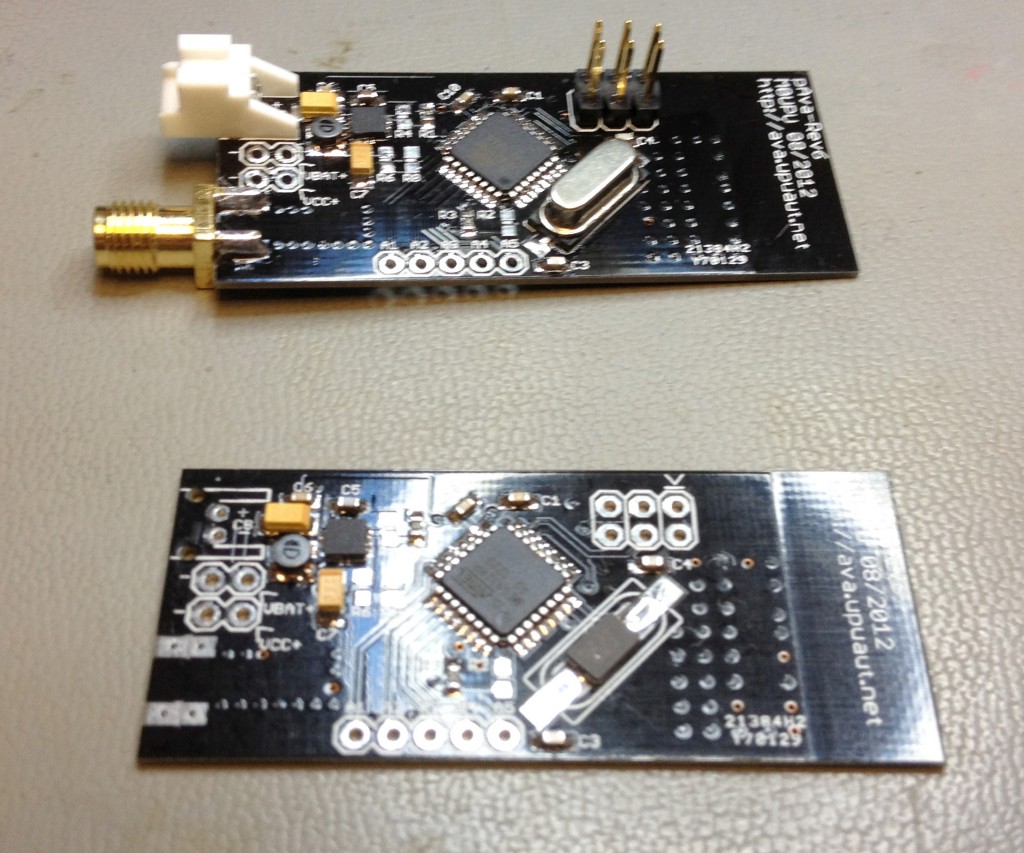The uAVA board was a great sucess proving the concept of the smaller layout with the boost power however it was a bit of a slap dash design and the boost circuit wasn’t great. However it did successfully prove the concept and has flown on a number of flights. Dave actually flew the pAVA board on his 5th Scouts mission then tried to fly it back to me on a Pico balloon.
Didn’t do bad either it got to the Peak District before it quite literally ran out of gas. It also proved quite categorically the chip antennas work really well. The board would run from a single AAA for about four and half hours with no power saving code. We did test power saving but the code isn’t reliable and on an attempt to fly the uAVA board on Dave’s BEAR launch with power saving the GPS locked up. Fortunately it was recovered as it was attached to another payload.
I’ll keep working on the power saving as if it worked 6.5 hours from a single AAA is very possible. Anyway onward, in an attempt to push the power consumption down even further and reduce the size and weight even more I started working on a new revision of the pAVA board. I decided to make this board have the ability to run at both 3.3V and at 1.8V to reduce the power consumption even further.
After a number of redesigns pAVA Rev6 (catchy huh ?) was born. Combining the usual ATMega328, RFM22B and the uBLOX MAX6 with a TPS61201DRC boost converter has resulted in a very small board weighting in at 4 grams without antenna. The board can run at 3.3V (with a TPS61201DRC and a 8Mhz crystal) or at 1.8V (with a TPS61200DRC and a 4Mhz crystal). To facilitate 3.3V usage a single R0 bridges the voltage divider for the adjustable version.
The TPS6120XDRC has a PowerPAD(TM) under it which it uses to dissipate the power, not having a reflow oven I put a via through the PCB to facilitate soldering from the underside. Its quite a tough module to solder by hand, the 10 pin QFN module is only 3mm x 3mm.
Shown above , top board is using a low profile HC49 crystal and has headers on (this is my development board), below it is a 3.3V version with no headers and the Abracon ABM03 crystal weighing in at 4g.
The board also has pins A0 to A5 broken out for future things.
Here is a pic of it next to an SD card for scale :



2 Comments.